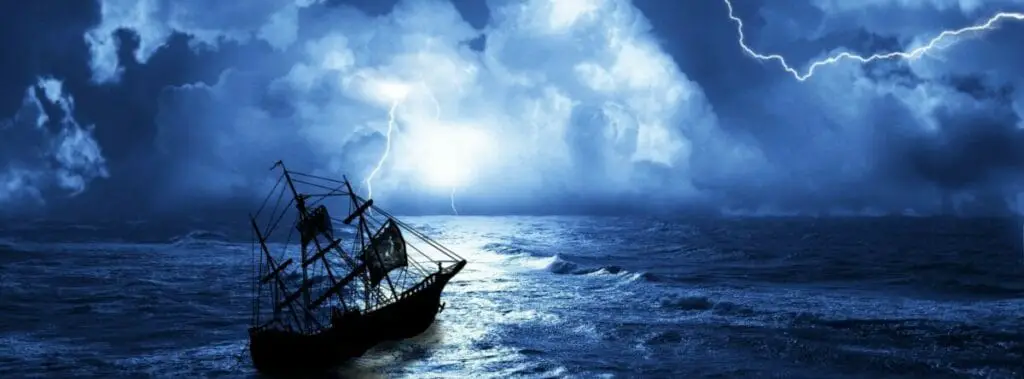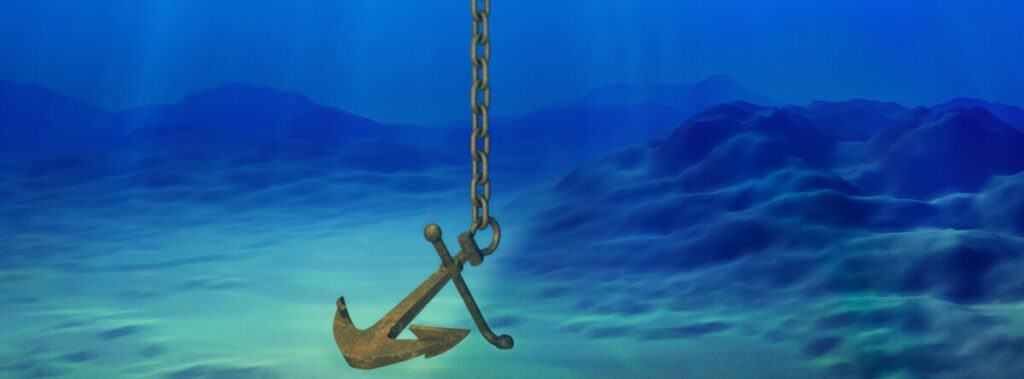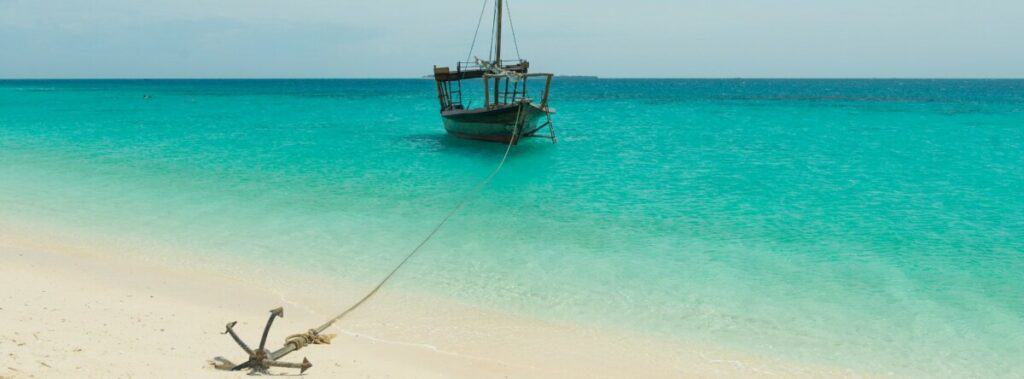It’s important to know how to correctly anchor your boat in order to protect both you and your equipment, but where should you avoid anchoring your boat?
Areas with gravel, rock, or weed sea beds should be avoided for anchors, as they are hard for anchors to get a grip on. There is no one anchor design that works best for all situations. It’s best to keep multiple anchors suited to different terrains on hand at all times.
Where will anchors slip out? Where will they have a hard time locking? These questions are answered below.
Prohibited Areas
On charts, the Prohibited areas are marked by a crossed-out anchor. In some cases, an area may be prohibited to anchor in because of environmental damage that could be caused.
For example, an area may be prohibited if there’s a possibility that the anchor will damage a coral reef or disturb or injure an endangered species.
Weather Conditions

The strength and direction of the wind and the currents are two major factors when it comes to setting an anchor. Never set an anchor lee shore. What is lee shore? Lee shore is when the wind is blowing towards land. You never want to be anchored in an area like this, as it could result in you being blown inward and wrecked if a storm were to come in.
Winds and currents can also cause a boat to swing around. If a boat is swung around too much, this can sometimes cause an anchor to become dislodged.
The rising and falling of the tide can also affect anchoring. If an anchor is set in a spot at low tide, when the tide comes in the anchor chain may no longer be long enough, which could lead to potential damage to the boat and/or the anchor.
Alternatively, if a boat is anchored somewhere where the tide has come in and then the tide lowers, the anchor chain is now too long for where the anchor was set. This can lead to the boat being moved around and no longer being held securely in place. This could allow the boat to run into dangers that it was previously anchored safely away from.
Shelter
One way to prevent issues with an anchor is to make sure that the area where the anchor is set is well protected from the elements. The shelter is especially important during storms or any sort of overnight stop.
Sea Beds
It’s generally better to try and anchor somewhere flat, but whether or not you can anchor somewhere will often depend on what material forms the sea bed beneath you.
Sand
- Isn’t typically the best, as sand can get shifted around fairly easily.
- Harder sand can result in better anchoring conditions.
- If attempting, an anchor with a larger surface area is preferred.
Mud
- Mud will be suitable for most anchor types due to its firm grip.
- Anchors with larger surface areas are preferred.
Clay
- Great for anchoring, as anchors are able to keep hold of it well.
- Anchors with sharp tips are recommended, as they will be best able to penetrate the surface of the clay.
Gravel
- Not recommended for anchoring, as the gravel will slip around too much for the anchor to get a good grip on it.
Rocky
- Less dependable, but technically possible.
- It is best to use heavier or plow-shaped anchors.
Weedy
- Best to use anchors with good penetration capabilities.
- Be sure to check that it is a true hold instead of just temporarily caught in some type of root.
Anchor types

There are many different types of anchors suited to different situations.
- Fishermans – This is the stereotypical anchor that people think of when they think of boats. The Fisherman’s anchor is large and heavy so it can be awkward to move, but it does an excellent job of holding in densely weeded or rocky seabeds. Avoid using this anchor type in sand and mud.
- CQR or Plow – This type of anchor does well in mud and sand. These types of anchors tend to be awkward to keep stowed on a deck, so it’s recommended to stow them on a bow roller.
- Delta – The Delta is another plow-shaped anchor, but it has a more powerful design. As with the CQR, Deltas can be hard to keep on deck so it is best to keep these on a bow roller as well. Delta’s large power-to-weight ratio makes them ideal for sand and mud sea beds.
- Bruce – The Bruce anchor is easy to handle and will be suitable for sea beds of mud, rock, and sand. To ensure that a boat stays anchored, it is best to buy an oversized one as the larger ones have the best chance of holding well.
- Danforth – Danforths are often used as backup anchors because they are easy to stow flat and hold onto most sea beds well. One downside to the Danforth is that it is likely to pull out if the wind or current reverses and is a hard anchor to reset.
- New generation anchors – Like most things, when something new comes about, it will usually outperform the dated model and that is no different when it comes to anchors. The below anchors are new generation anchors that will do what you need them to:
- Saraca Excel (convex)
- Manson Supreme (hooped)
- Mantus (hooped)
- Rocna (hooped)
- Manson Boss (concave, no hoop)
- Spade (weighted tip)
- Vulcan (weighted tip)
- Ultra (weighted tip)
How to Dislodge an Anchor
There are many ways an anchor can get caught, especially if the wrong anchor has been used for the wrong situation. When this happens, here are some ways to dislodge the anchor:
- Short Haul – Pull the line until the boat is directly above the anchor. Get the anchor as tight as you can as the boat dips down into a trough. If the hold is tight enough, the anchor will hopefully be pulled free as the boat crests on the next wave due to the increased tension.
- Ring Ding – Snap the retrieval ring and buoy around the cable. Next, you’ll have to drive past the anchor at an angle of about 45 degrees. This turns the float and ring into a pulley, combining this with the pull of the boat can free the anchor.
- Cut your losses – There are times when there is just no saving that anchor. If this is the case, do your best to cut the rope as short as you can so that it won’t cause problems for other boaters.
Project “Staying Put” Boating
Check out our article on: How To Beach A Boat: (Two Must Know Techniques!)

